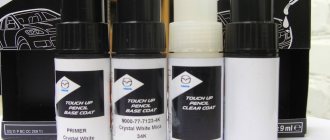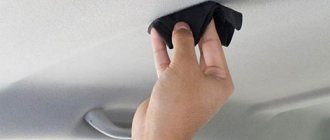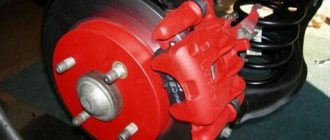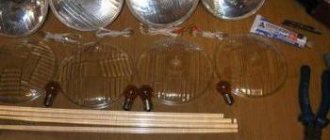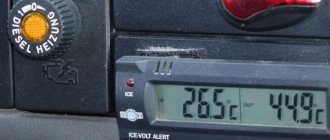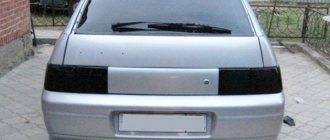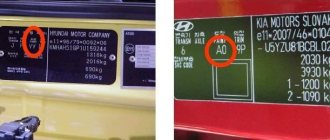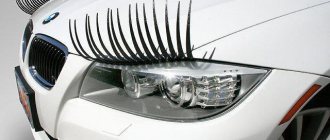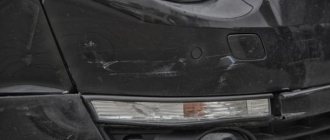As you use your car, it will eventually develop various dents, defects, and scratches. No matter how carefully the driver drives, such damage is possible even for reasons beyond his control. Very often, small dents appear from hail, a fallen apple or branch, improper parking, or a small accident. Scratches happen from bush branches, careless parking and other reasons. Often, the car owner discovers minor damage to the body and does not know exactly the cause of its occurrence. If the defects are not so significant and not very noticeable, then there is no urgency for body repairs. If the defect is associated with damage to the paint, even to the metal, then you need to resort to removing dents and scratches on the car to prevent corrosion on the body.
Removing scratches on a car body without painting
Before starting work, the vehicle must be washed thoroughly. Only on a clean body can you assess how badly the paintwork is damaged and detect any existing damage. After this, you can choose a method to eliminate them.
Based on the size and depth of scratches, there are the following methods for removing scratches without painting:
- polishing the body (by hand or using a special machine);
- application of restoration pencil.
Without painting, it is impossible to remove deep damage from the body that affects all layers of paintwork and metal.
Types of damage
Damage in the form of chips and scratches does not always appear on the paintwork due to its natural wear and tear. They can also appear as a result of minor accidents. Scratches are usually divided by experts into several categories:
- damage that does not reach the base layer of paint;
- scratches reaching the primer or metal.
Small scratches that do not reach the paint appear on the protective varnish layer. Removing scratches without painting is quite possible with careful polishing. Deeper scratches are most often caused by small stones falling from under the car in front. Repairing such damage is impossible without painting. If the damage occupies half or more of the area of the hood, bumper or fender of the car, it is better to completely repair this part.
Scratches that reach the metal may contain a certain amount of rust.
You can remove it using a rust converter. This product eats away rust and converts it into a protective layer.
Only small scratches and chips that have not reached the main coating layer can be removed from the car body. You can determine this more accurately after washing your pet. In this case, almost all small and large scratches appear. Washing is also needed to polish the damage itself.
Removing scratches on a car with your own hands using a pencil
In reality, using a restoration pencil will not produce such a miraculous effect as in advertising. It helps remove chips and scratches, but in most cases they will still be visible (the color is difficult to match). You need to choose a pencil very carefully.
It is important to know that using a pencil is only advisable if the factory primer is not damaged.
Removing scratches on a car with your own hands using a pencil begins with washing it, because it can only be applied to a clean and grease-free surface.
Anti-silicone or white spirit are good for degreasing. If they are not available, then you can use gasoline.
When the preparatory work is completed, you can apply the pencil. It dries completely within ten minutes.
A cheap alternative to pencil can be nail polish for women. It is most successfully used to mask paint chips.
The main thing is to choose the right color. It's different in the jar than what you actually get. The varnish is also applied to a well-washed and degreased surface.
Methods for repairing dents on a car
When talking about removing defects on a car body, it most often means disassembling the car, straightening the body parts and further painting. This is a rather expensive repair method that requires a lot of time and skilled technicians. But there is not always a need to carry out such work. It is possible to remove dents on a car without painting.
Read about how to soundproof your car yourself. And also about the car body.
If minor dents appear on the body, but there is no damage to the paintwork, then you can resort to the modern method of pulling out dents using a special device. The device works quite simply, so it can be used independently. The essence of the device is as follows: it emits induction waves that act on the metal, heating it. The heated metal of the body in the depression area takes on its original shape. The device only affects metal and does not heat the paintwork.
Watch car dent repair in the video below.
A device for removing dents on a car is used for minor body defects due to:
- hail, berries or fruit falling on the car;
- parking dent;
- defects received during transportation of the car;
- other damage with the formation of gentle depressions on the body.
Removing dents on a car using a modern device does not require removing body parts and then painting them, so it does not take too much time.
How to remove small scratches from a car body using polishes
Polishing is used if the damage has not affected the main layer of paintwork, the defects are only on the varnish. This method involves the use of a special paste.
Before polishing, the car must be washed. Body polishing is done in parts. The fender, door, half of the hood, etc. are processed separately.
The products dry very quickly, and it is simply impossible to apply them evenly over a large area.
For example, the roof needs to be divided into four parts. Today, manufacturers offer many different car polishes.
They can be divided into the following types:
- synthetic,
- wax,
- abrasive.
Which type should you choose? After all, the result of polishing will depend on this. Let's look at each type in more detail.
Removing scratches from cars using simple means
Scratches on the car body are inevitable during active use. Damage spoils the appearance and leads to corrosion. On plastic parts, this place becomes vulnerable to atmospheric and mechanical influences. But don’t panic—you can remove scratches yourself using the means at hand.
WD-40 lubricant
WD-40 is the first aid for many problems with equipment. Scratches on the body can also be removed using this miracle liquid.
Here you will combine cleaning the damage from rust, protecting this area from moisture and oxidative processes, and masking the damage to the paintwork.
- Wash the damaged area with warm water to remove any dirt. Wipe dry.
- If the edges of the scratches are sharp and high, sand them with fine-grit sandpaper.
- Apply a little product and rub with a soft cloth in circular motions, pressing lightly. WD-40 will soften the paint, and the rag will “pull” it apart to damage it.
- Carefully wipe off any remaining product.
Work only with gloves and, preferably, a respirator - the product is toxic and explosive. So have a fire extinguisher ready.
The procedure can be repeated to achieve the desired result. The work will only take a few minutes.
This method is indispensable when you need to quickly get rid of scratches. Its disadvantage is the short duration of the effect.
Acetone
Surface preparation: wash thoroughly (preferably with a brush), dry and wipe. Remaining moisture will slow down the effect of acetone on the paint.
To eliminate damage, take a clean white cloth and moisten it with acetone. If you don’t have a clean one, any liquid based on it will do (for example, nail polish remover).
Rub the cloth over the damaged area until the scratches disappear. The action of acetone in this case is based on the same effect of softening the paint.
You need to take a white fabric, since under the influence of acetone, the fabric paints can stain the car.
Toothpaste
Even large scratches can be dealt with with toothpaste and a dishwashing sponge.
- Wash the surface of the car.
- Degrease the area using any alcohol-containing liquid.
- Apply the paste to the hard side and rub the scratched area in a circular motion. The rough surface of the sponge and the abrasive properties of the paste will smooth out damage, leveling the paintwork.
- Apply the paste to the soft side of the sponge and rub in a circular motion. In this case, the dust that formed at the previous stage will be erased, and the scratches will be filled with paste, leveling the surface.
The method is suitable for light-colored cars and shallow scratches. If you don't have a dish sponge on hand, use a toothbrush. Apply the paste to it and rub in effortlessly. Don't skimp on the pasta. Leave the car for 10-15 minutes. If you are not satisfied with the result, repeat the procedure.
When finished, remove excess paste with a dry paper towel.
Brake fluid
Small but clearly visible damage will be removed by brake fluid. It will dissolve the paint and cover the scratches with coating from adjacent areas.
Carefully wash the area to be treated and let it dry, otherwise dirt and moisture will prevent the paint from softening.
Apply the liquid to a rag and rub the scratched area with circular polishing movements for 10 minutes. After this, rinse the car and let it dry.
This option hides scratches for a long time.
Sandpaper
Sandpaper will help you get rid of light scratches yourself. It is recommended to use fine-grained sandpaper marked P2000.
- Soak the sandpaper for 10 minutes in water. At this time, wash the area of the body that needs updating, dry and degrease.
- Wrap soaked sandpaper around a small wooden block or regular eraser to make it easier to work with.
- Sand the damaged area without pressing the sandpaper, just to remove the varnish from the car.
- Wipe with a dry cloth.
- Polish the surface with a grinder with a polishing wheel and apply polish. First, an abrasive one, and then a special polish for shine.
- Polish adjacent areas so that the updated area does not stand out.
It's easy to disguise deep scratches and remove small scratches without leaving a trace. The main thing is to act carefully so as not to enlarge the damaged area.
- iarriba
Source: https://carnovato.ru/ubiraem-tsarapiny-s-avto-prostymi-sredstvami/
Synthetics
This type includes products such as restorative cleaners, silicones and polymers.
The main advantage of restorative cleaners is the rapid restoration of paintwork. They contain special chemicals that remove layers of oxidized paint, remove stains and scratches.
After them, the car shines like new. These tools are universal. They are suitable for both regular and metallic finishes.
Reductive cleaners have one drawback. After their use, additional treatment of the body is required to prevent clouding of the coating. This is due to the fact that they remove a significant layer of everything unnecessary.
Silicone car cosmetics are well suited for this. The result obtained after such polishing will last from 6 to 12 months, depending on the operating conditions of the machine.
Silicone products are quite liquid, so they are only sold in bottles with a trigger. They have shown themselves well, but, unfortunately, do not have a lasting long-term effect.
The composition is completely washed off the body after high-pressure washing. An expensive, high-quality product can withstand a maximum of three washes.
Polymer polishes, in addition to removing scratches, create a protective layer on the surface of the car. This helps prevent the negative impact of dust, salt, road bitumen and sunlight on the body. This treatment makes the color more saturated and repels dirt from the surface.
The disadvantages of polymers include the high cost and complexity of their application. A polishing machine is required.
Cosmetic body polishing
Small scratches from branches, traces of interaction with road reagents, sunlight and, of course, bird droppings, which can corrode the outer layer of the varnish coating in a matter of days - minor “bruises” of the car. You can independently remove these defects with the help of proper car polishing, which will not only eliminate the appearance of damage, but also protect body parts from rust.
Video tutorial on how to polish a car from scratches
Depending on its functional purpose, polishing can be abrasive or protective. Abrasive or restorative polishing removes microscratches and returns the paintwork to a stylish and shiny appearance. Depending on the size of the abrasive particles, various polishes are distinguished. They ideally smooth out the top damaged layer of varnish, thus removing scratches.
It should be remembered that frequent use of abrasive paste is unsafe for the car body, since the top layer of paint is erased along with the defects.
As a rule, the density of the paintwork on a foreign car body is 100 microns. Based on the calculation that one polish removes 5 microns, imported cars can be polished approximately 20 times.
Protective polishing includes the use of various types of mastics and waxes, which create an invisible protective film on the body, giving it a well-groomed appearance and a beautiful shine.
Do-it-yourself abrasive polishing includes several stages:
- washing and drying the body;
- treatment with an alcohol-containing liquid to remove oil stains;
- grinding.
Cosmetic polishing can be done manually or using a special machine. If a car enthusiast’s garage does not have space for a polishing machine, scratches can be removed quickly and efficiently using a napkin. Use a circular motion to sand the damaged area and constantly ensure that the paste does not dry out, as it will scratch the paintwork.
Before you start polishing, professionals advise practicing on an inconspicuous area of the body. After treatment with polish, it is worth fixing the result with wax or protective mastic.
Abrasives
The use of abrasive polishing agents is considered the most effective. However, they must be used with caution. These products are only relevant when quick paint restoration is required.
Abrasives contain small particles that remove part of the varnish layer. Polishing must be done carefully, as there is a risk of rubbing off the paintwork.
It does not matter how polishing is done: manually or with a grinding machine. The grinding wheel or rag must be perfectly clean.
If even the slightest particle of dirt gets in, its trace will remain throughout the treated element. After processing, an additional layer of polishing without abrasive is required.
Abrasive polishes can only be used once every 5 years. You can find such polishes on sale in plastic bottles or tubes.
If there is no special device for polishing, it can be replaced with a drill with a felt attachment. Its speed must be regulated.
At high speed, you can accidentally remove the paint down to the metal. Sometimes “grinders” are used for these purposes. They should also have the ability to adjust the speed.
Now the appearance of defects will not be a problem for you. You know how to remove minor scratches from a car body. Carry out restoration work in a timely manner.
For minor damage, this will take no more than an hour. This will help avoid serious damage to the paintwork, which will be much more expensive to fix.
Touch-up is not painting
If you get a deep scratch, you can't rely on a pencil and polish. The pencil will hide the scratch for a while, but over time the wax will fall out and you will have to start all over again. Still, you'll have to paint it. The work is carried out in this order:
- Thorough washing, preferably with a degreaser, drying.
- Treatment with any degreasing compound that will not destroy the live paint layer. White spirit will do.
- Clean the wound with a damp cloth and then with a dry cloth.
- Inspect the scratch for the appearance of corrosion products. Even if they are not visible visually, it is advisable to apply a thin layer of anti-corrosion primer. If you neglect the primer, the paint may subsequently swell.
- A thin layer of regular primer is applied on top, and after it dries another one.
- Several layers of base paint are applied to the dried primer, dried and polished.
This way you can remove small scratches from the body without resorting to painting the entire part. The work won't take much time, but the car will be like new again. Good luck to everyone and no more scratches!
Car cosmetics
There is a remedy for eliminating scratches, abrasions and small chips, and more than one.
There is no magic wand that can return everything to factory condition. But you can get closer to the ideal.
Wax corrector
Externally, it is a colored pencil for shading surface defects. It is difficult to find an original color. The only thing that succeeds in most cases is to make the scratch unnoticeable. It is not noticeable even from a distance of one or two steps.
Properties
- stickiness when applied to the surface,
- hardness when solidified,
- does not wash out from scratches with water,
- withstands summer temperatures (depending on the chosen brand).
Compound
It is based on synthetic and natural waxes dissolved in industrial oil. They added: an inhibitor to protect against corrosion and pigment.
How to use:
- clean a scratch on the body;
- rinse and dry with a dry cloth;
- degrease with gasoline, white spirit or acetone;
- fill the recess using the “lengthwise and crosswise” method;
- compact, clean off excess wax;
- polish thoroughly with a piece of soft felt (sometimes it is included in the kit).
If the wax is too hard and poorly tolerated, the pencil must be heated under the cabin heater or on a hot engine.
Popular types of correctors:
- "Everest";
- "Astrokhim";
- Polish;
- Fix It Pro.
The shelf life of the products is from 3 to 5 years.
Polishes
Available in:
- spray,
- polishing liquid,
- hard paste (GOI type).
The composition of polishes can be:
- waxy;
- silicone;
- abrasive;
- composite (mixed), combining the qualities of the three previous types.
Renamax is a universal composite product. When polishing, all its components come into play at once:
- abrasive removes: - dirt, - rust from cracks;
- wax eliminates: - minor defects, - paint cloudiness;
- silicone adds shine to: - paintwork; — chrome accessories (handles, disks, etc.).
Application:
To apply Renamax to remove scratches, all you need to do is:
- Shake the bottle of polish thoroughly;
- unscrew the cover;
- squeeze some of the contents onto the damaged area;
- remove excess with a spatula or rubber glove.
The final stage is mechanical polishing with a felt swab. All this can easily be done with your own hands.
